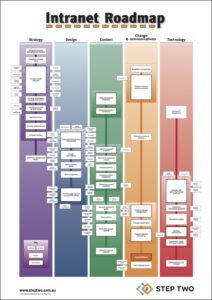
Filed under: Digital workplace, Intranets, Latest Features
Organisational values and a deeper sense of “purpose” – the very reasons an organisation does what it does – are key themes in business. In the external world, they are important brand attributes for customers, shareholders and the media. When these are absent or are not being adhered to, and a company is perceived to be acting unethically, it can lead to significant consequences, such as the poor publicity that some of Silicon Valley’s businesses have been receiving.
Values and purpose are also important inside the organisation. They are key responsibilities for HR and internal communications teams, and important drivers of employee engagement and talent retention.
How the digital workplace helps
Although values and purpose are clearly important, the danger is that they become associated with woolly and generic statements. The digital workplace can help reinforce values in a variety of ways, making them real and actionable in order to influence positive outcomes.
This is done through:
- Communicating the values as a reminder to employees, through news, video and other content.
- Living the values, reflected in the way the platform operates.
- Validating the values by reminding employees of examples of actions which demonstrate the values.
- Supporting specific initiatives related to values through microsites, content and workflow.
- Enabling employees to carry out the values through digital capabilities and learning.
Reflecting your values is also a point to consider to support your ethical responsiblities in the digital workplace. Here is an example of each of the five methods mentioned above.
Communicating safety information at Goldcorp
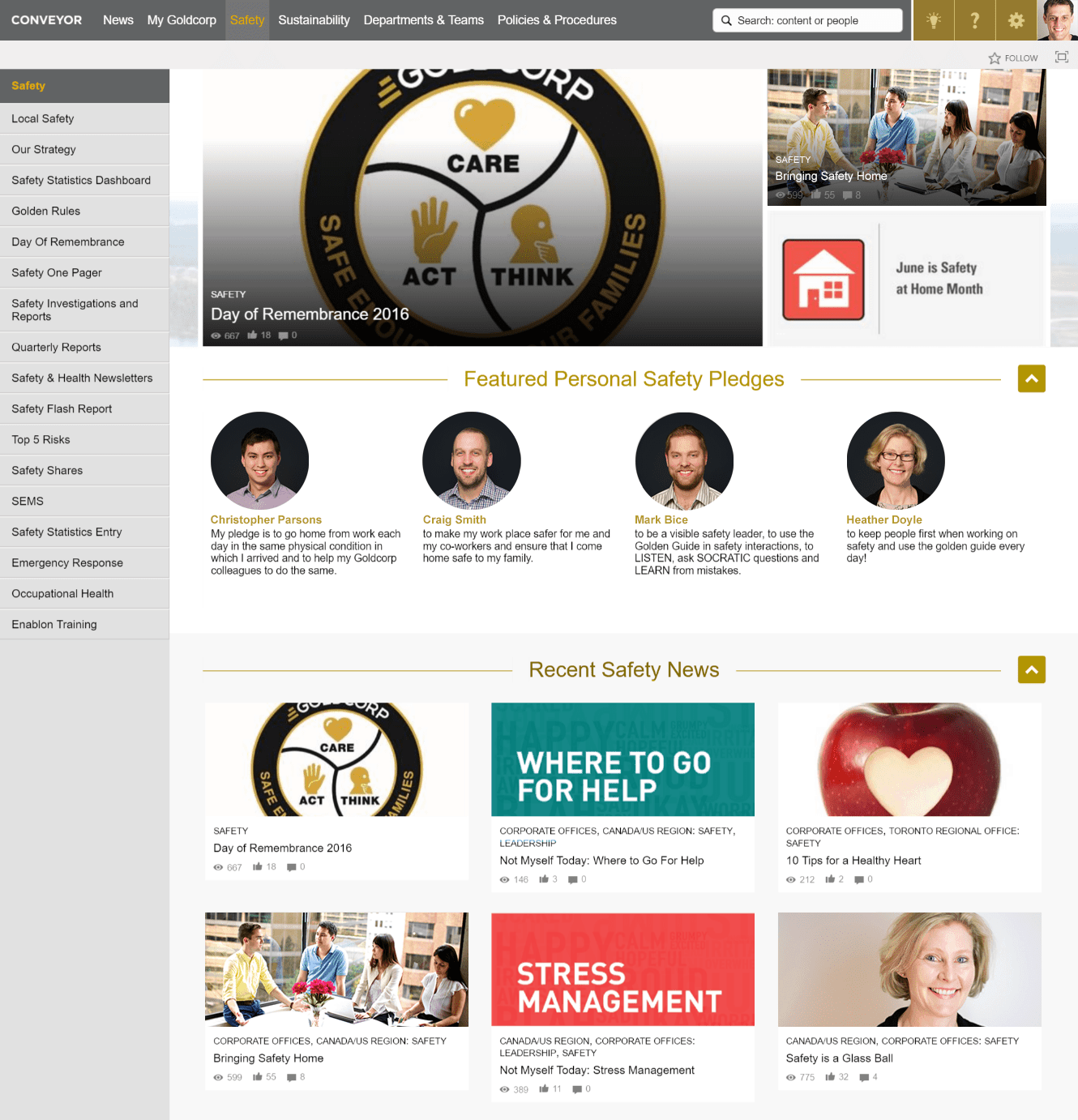
Safe production is a core value at mining company Goldcorp. The intranet helps reinforce this with a landing page dedicated to safety and relevant news. Screenshot appears courtesy of Goldcorp.
Digital workplaces and intranets often deliver messaging about company values, which helps to increase employee awareness of their importance. At mining company Goldcorp safety is taken very seriously, with “Safe Production” one of the company’s core values.
On Conveyer, the Goldcorp company intranet, a top-level navigation item is dedicated to “Safety”. This leads to an extensive landing page containing news, contacts and videos. Personal pledges to be safe at work from individual employees are also included. News stories on the intranet also feature safety prominently and are clearly labelled as such.
Overall the intranet helps to keep safety front of mind while also showing the commitment of employees to staying safe.
Living the values with open discussion at Deutsche Telekom
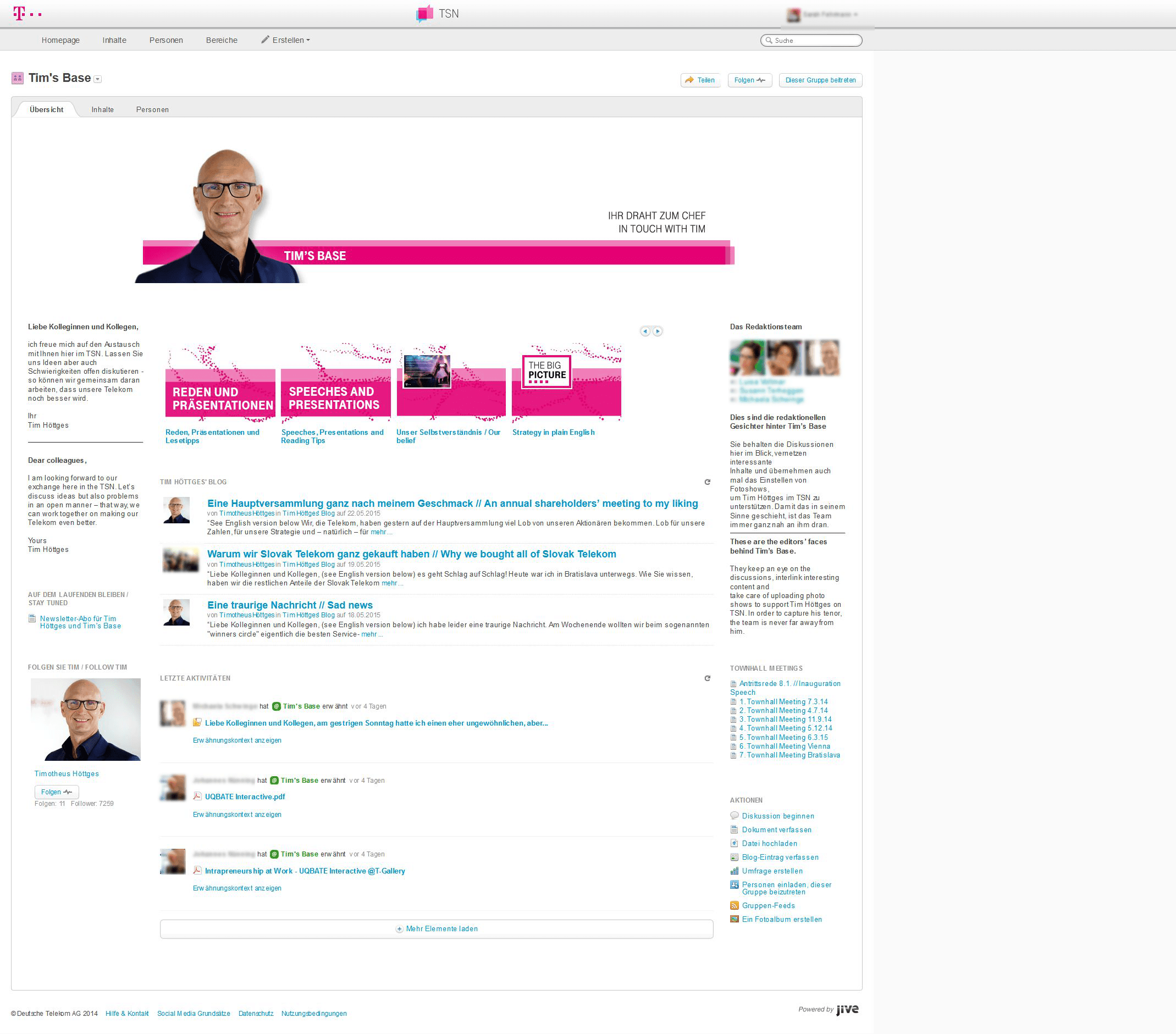
“Tim’s base”, the community where employees can actively engage with the Deutsche Telekom CEO. Screenshot appears courtesy of Deutsche Telekom.
The way digital workplaces operate should also be consistent with company values. Telecommunications giant Deutsche Telekom has adopted five guiding principles to strengten its company culture. One of these, “Team Together – Team Apart” stresses the importance of: “The culture of cooperation. As a team, issues must be discussed openly. There has to be room for different opinions and serious discussions.”
A prominent area of the Deutsche Telekom intranet known as “Tim’s Base” adopts this guiding principle by allowing a place where employees can ask questions and have direct conversations with the company CEO, Tim Höttges. Set up as a community, employees can initiate topics and also give open and honest feedback. The replies are written by the CEO himself.
Not only is this a great example of using social channels for leadership communications, but also of following the principles contained in the values.
Validating organisational values at TAFE Queensland
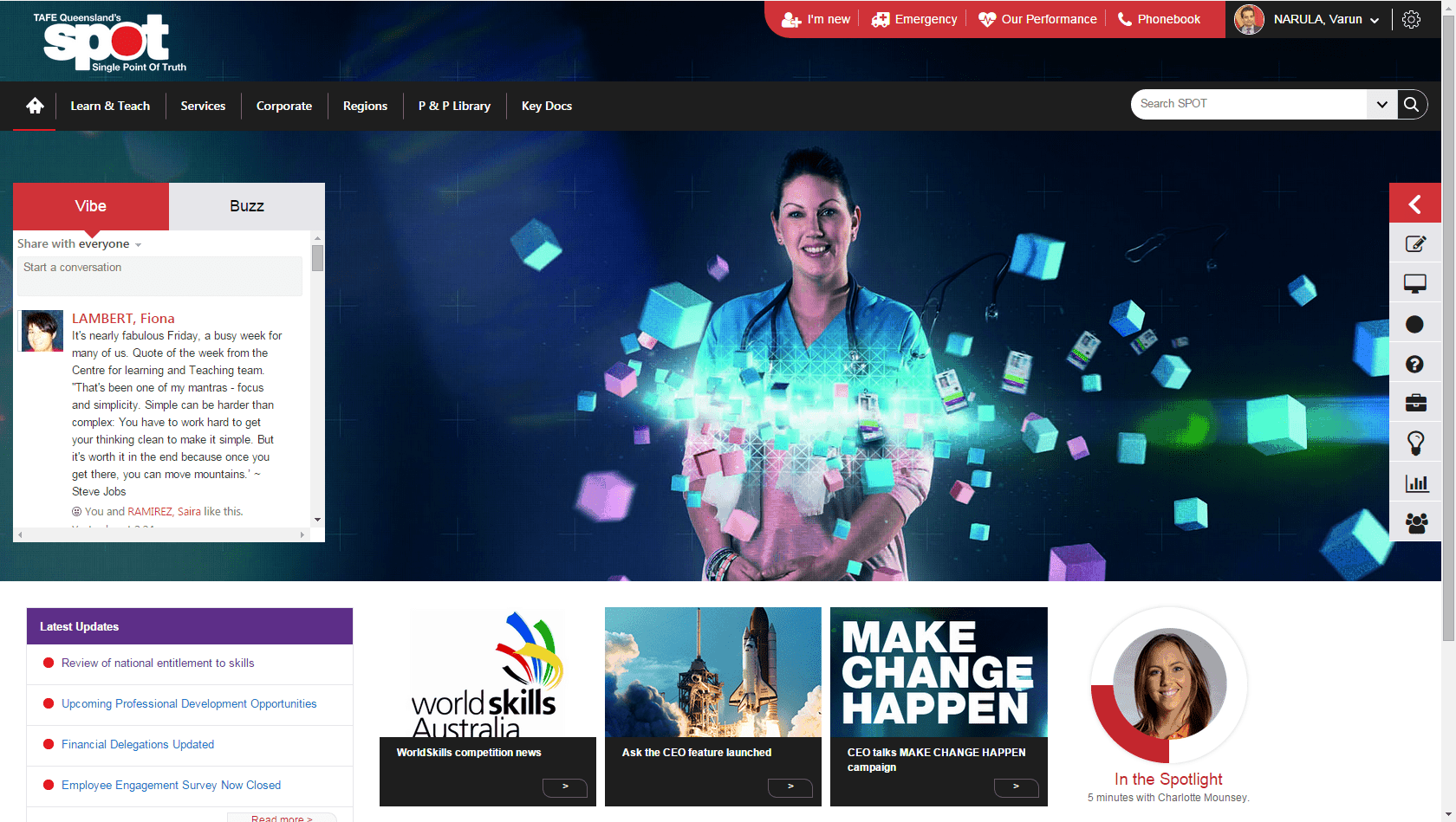
The homepage of the TAFE Queensland intranet. Screenshot appears courtesy of TAFE Queensland.
The digital workplace needs to do more than just describe the values – it needs to show that they are influencing how people act.
TAFE Queensland is a relatively new organisation, formed from a number of different vocational and institutional institutes in Queensland, Australia. The TAFE Queensland intranet (called SPOT) was regarded as a key focal point for helping to drive a new unified identity with organisational values as a common reference point.
Features on the intranet are used to show examples of employees carrying out the values. This not only reminds employees of the values, but also helps to validate and reinforce associated behaviours. A peer-to-peer praise feature allows employees to thank each other for being helpful or carrying out good examples of work. All of these are visible on the intranet. There is also an “In the Spotlight” feature on the homepage which highlights an employee who is actively demonstrating TAFE Queensland’s values.
Overall, these and other intranet features have helped the organisation to successfully move forward with a single identity.
Supporting a CSR initiative at Johnson & Johnson Asia-Pac
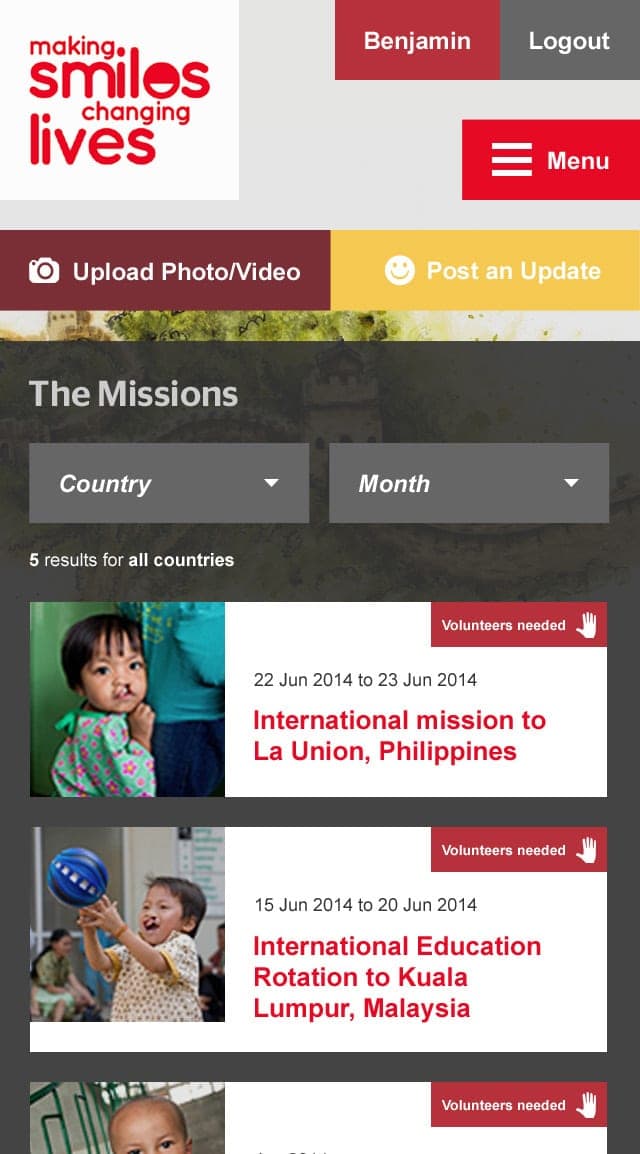
The Missions page where employees can upload video and photos of their volunteering, as seen on the smartphone view of Johnson & Johnson Asia-Pac’s Making Smiles, Changing Lives microsite. Screenshot appears courtesy of Johnson & Johnson Asia-Pac.
Healthcare company Johnson & Johnson has a set of values called “Our Credo” which are a fundamental part of the company’s culture, having been around since 1943. One element of this is a commitment to “Putting the needs and well being of the people we serve, first.”
In the Asia-Pacific region, the company has put this principle into action by working with a charity called Operation Smile which raises awareness and money in order to perform life-changing operations for children born with cleft lips or palates. Johnson and Johnson set up a campaign called Making Smiles, Changing Lives where employees could help to raise money but also volunteer for the charity. It is also designed to drive employee engagement.
A microsite was set up to support the initiative. This has had a great impact in galvanising support from employees who can upload blogposts, photos and videos of their various efforts, raising awareness across different Johnson & Johnson locations and inspiring other employees to join the campaign.
Mobile access allowed employees to easily upload photos and videos from smartphones directly from “Missions”, where they are volunteering directly for the charity as it performs operations in different countries. A counter on the homepage also lets employees know how many successful operations have been funded by employees and the company’s contributions.
Enabling global employees to live the values at Barclays
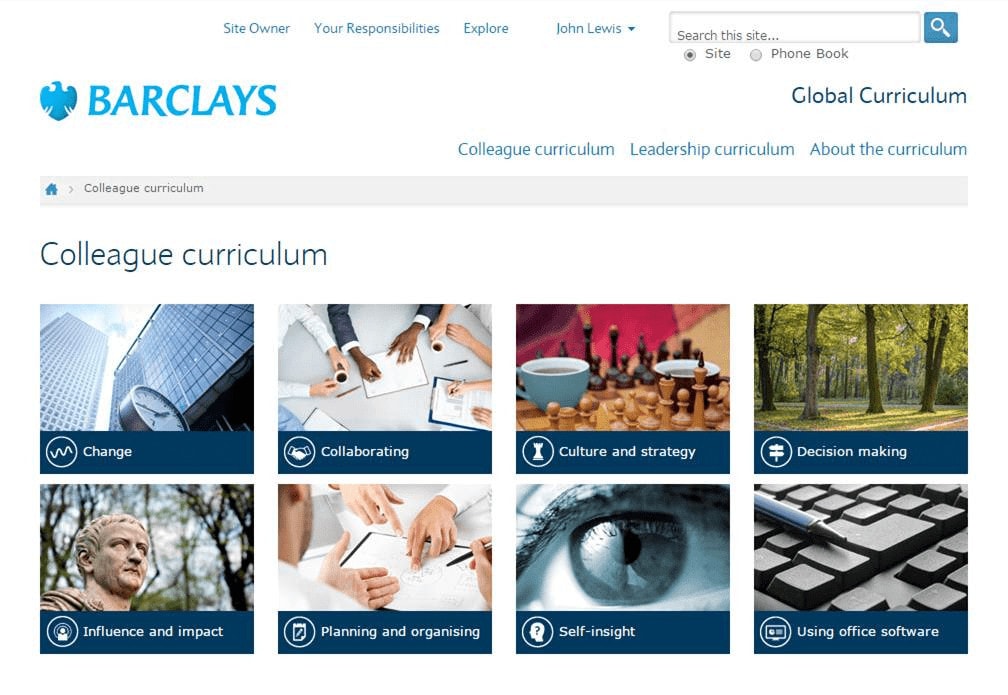
Some of the different categories of content on the Barclays Colleague Curriculum learning portal. Screenshot appears courtesy of Barclays Bank.
Barclays Bank wanted to drive customer service and become a more joined-up organisation. In their move to become the “go-to bank” they launched five core values – Respect, Integrity, Service, Excellence and Stewardship.
In order to equip employees with the skills to carry out these values in their daily work, the bank created a Barclays Bank learning portal and an accompanying “Colleague Curriculum” which is accessible to all global employees.
The learning portal acts on a self-service model, allowing employees to direct their own learning. The global curriculum aims to drive personal and behavioural development with all content aligned to values and core capabilities. The portal borrows heavily from the world of social media with each piece of content presented on a card, and a variety of different content types across different themes. Cards can be filtered and sorted by different criteria.
Values matter
Values are important. The digital workplace can help remind employees of what their organisation’s values are and reinforce appropriate behaviours.
Does your digital workplace use some of the methods described above? If not, consider how you can use different channels to make your values more tangible and real for employees. This can result in real, tangible benefits.





